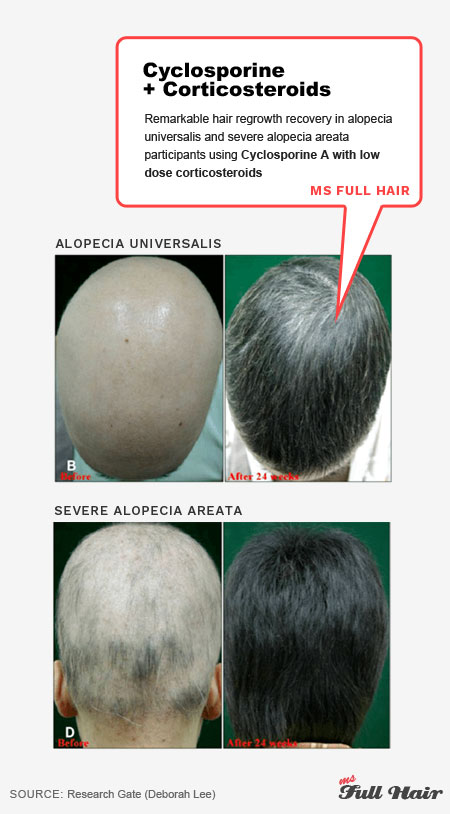
In clinical trials, some people saw 80% hair regrowth after 36 weeks. A type of immunomodulator called a JAK inhibitor, it was originally developed to treat rheumatoid arthritis. They work by suppressing the immune system.Īs of June 2022, one drug, Olumiant (baricitinib), is FDA-approved to treat adults with severe alopecia areata. It’s still normal to want to camouflage small symptoms, though. Most of these oral drugs, which include methotrexate, are approved for treating other autoimmune conditions, but they are sometimes used off-label to treat alopecia areata. The good news is most people who have alopecia areata are healthy. These drugs typically cause a rash and itching. They include diphencyprone (DPCP), dinitrochlorobenzene (DNCB) and squaric acid dibutyl ester (SADBE). Alopecia Areata (Patchy) Alopecia areata (patchy) causes one or more coin-sized, usually round or oval, patches on the scalp or other places on the body that grow hair. If the hair loss is widespread, a topical medicine that causes an allergic reaction can help by redirecting the immune system’s attacks on the hair follicles.
#Alopecia areata universalis treatment skin#
This tar-like medicine is considered a “scalp sensitizer.” Applied for a specified amount of time and then washed off, it works by deliberately causing skin irritation, which appears to trick the immune system into stopping its attacks on hair follicles. It works best when combined with other treatments. Prescribed for people of all ages, this treatment could promote hair growth within 12 weeks. Oral corticosteroids may be prescribed for widespread alopecia areata, but they shouldn’t be used long-term due to the potential for serious side effects. They can be injected or rubbed into the affected areas. These anti-inflammatory drugs suppress the immune system. None of these will interfere with hair regrowth. If you have significant hair loss on your head, consider wearing a wig, hat or scarf to protect yourself from sun and cold. In this systematic review, we evaluated the evidence surrounding systemic treatments for alopecia areata, alopecia totalis and alopecia universalis. The hair grows back within 12 months or less. DOI: 10.1111/ajd.12913 Abstract A range of systemic treatments are used for alopecia areata with variable evidence supporting efficacy.


Usually, the bald patches appear suddenly and affect only a limited area. While you’re undergoing treatment, new patches of hair loss may continue to appear. Call doctor Prognosis More info What is alopecia areata Alopecia areata is a skin disorder that causes hair loss, usually in patches, most often on the scalp. If cases of vellus hair growth are excluded, and those who lost their PUVAinduced regrowth rapidly on followup, the effective success rate was at best 63. None are a cure.Ĭombining treatments may increase their effectiveness. The body may decide one day to correct the hair loss on its own, but a number of treatment options offer the possibility of faster, more reliable hair regrowth.


 0 kommentar(er)
0 kommentar(er)
